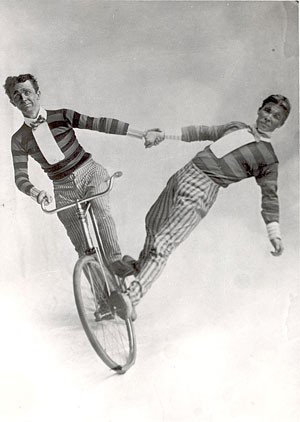The UA was chosen over Harvard University to house the world’s largest Vaudeville collection, thanks to a comprehensive donation from the American Vaudeville Museum.
The collection, amassing more than 1,000 items, will be officially transferred to the UA today at 4 p.m. in Room 100 of the Social Sciences building.
The transfer will be accompanied by a presentation during which Frank Cullen, director of the American Vaudeville Museum, will discuss “”A History of Vaudeville in 8 Acts and 60 Minutes.””
“”We’re really excited about the donation, and we hope it will create a nice little niche for the UA,”” said Jerry Dickey, a theatre arts professor who worked to secure the collection.
Cullen said he had three reasons for giving the collection to the UA, including his close relationship with David Soren, a classics professor; the quality and performance training of the UA’s theatre program; and his view that its library system is one of the most innovative in the country.
He needed a place for the collection after he decided to close the museum’s Boston location and retire to the Southwest.
“”It’s time we pass it on and pass it forward,”” he said.
Dickey compared Vaudeville to “”American Idol,”” a democratic process wherein anyone could have an act or talent and let the audience decide the quality of the performance.
Celebrated performers like Thomas Woods and Sophia Treadwell, along with numerous immigrants, used Vaudeville as a stepping-stone to other art forms.
According to Soren and Dickey, the collection contains important works that historians have, for the most part, overlooked.
The bounty comprises photos, recordings, props and costumes of important performers and acts, as well as information on relevant historical periodicals.
“”This collection is so unique and special,”” Dickey said. “”We are very fortunate to have it.””
The collection will be stored in the Special Collections section of the UA Main Library after the entire catalogue has been opened and sorted, Soren said. Students will have access to a significant amount of the materials.
They will be a great resource for students and faculty to use in classes and research, he said.
Some of the material is already in use by students and faculty making a pilot program for PBS called “”Forgotten Lives,”” he said.
The collection will strengthen the UA’s performance arts programs while also bolstering the Southwest’s importance in theater, in light of historical theater collections in California and Texas, he said.









